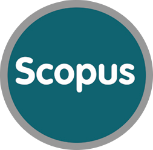Neurodiversity at Work: Hrm Strategies for Creating Equitable and Supportive Tech Workplaces
Keywords:
neurodiversity, HRM, inclusion, tech workplaces, cognitive diversity, equitable employment, workplace accessibilityAbstract
Neurodiversity refers to the natural variation in human cognition, encompassing conditions such as autism, ADHD, dyslexia, and other neurological differences. In the rapidly evolving tech industry, where innovation and problem-solving are paramount, neurodiverse talent offers unique strengths. However, traditional Human Resource Management (HRM) practices often fail to accommodate diverse cognitive needs, leading to exclusion and underutilization. This paper explores HRM strategies aimed at fostering inclusive, equitable, and supportive environments for neurodiverse professionals in tech workplaces. Drawing from current literature and emerging best practices, the article highlights the importance of accessible recruitment processes, flexible work structures, inclusive communication, and targeted training. The findings underscore the strategic value of neurodiversity in enhancing innovation and organizational performance, while emphasizing the role of HR in dismantling systemic barriers. By promoting inclusive HRM, tech organizations can not only meet ethical obligations but also gain a competitive advantage through cognitive diversity.
Downloads
Published
How to Cite
Issue
Section
License
Copyright (c) 2025 Well Testing Journal

This work is licensed under a Creative Commons Attribution-NonCommercial 4.0 International License.
This license requires that re-users give credit to the creator. It allows re-users to distribute, remix, adapt, and build upon the material in any medium or format, for noncommercial purposes only.

